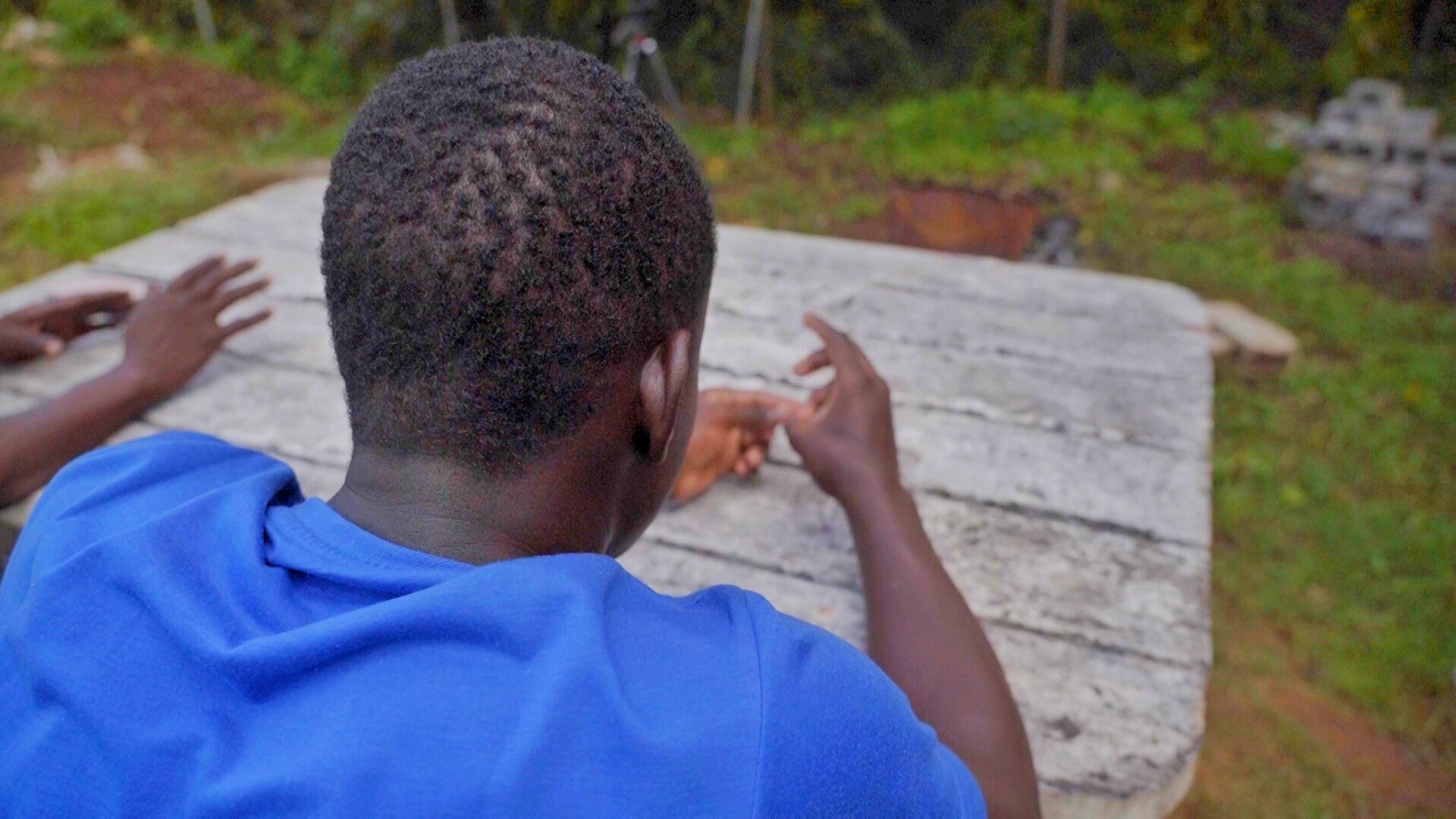Instead of sitting in a classroom, 17-year-old “John” now sits in the Grand Bacolet Juvenile Rehabilitation and Treatment Centre. This center in St Andrew can be considered a detention center for juveniles in conflict with the law. John is serving 9 months after being sentenced by a Juvenile court for committing acts of housebreaking, stealing and drug possession. Additionally, he is facing additional penalties for escaping from the facility. This is not John’s first time at Grand Bacolet. he has seen the inside of the facility before when he was charged for similar offences.
This teenager, who is yet to lose his youthful features, feels that there is a chance that he could turn his life around. At least, he said he is willing to try.
John grew up in the community of Telescope, located in St Andrew 24.4 km away from the capital of St George, a place locally referred to by a group of young men as ‘Iscope’ or Telescope Purple City (TPC). Their identity, John says, is centred around the colour purple, and was heavily influenced by the United States’ Blood and Crip gang cultures. The group identifies with the colour purple, which derived from a US rap music video which featured the popular Harlem rapper known as Jim Jones, a known member of the Bloods gang.
This striking footage of gang activity in Telescope as portrayed in several music videos is a grim reminder of the worsening state of young men who have resorted to life on the streets, many of whom came from dysfunctional homes with little or no parental supervision, especially not having a positive male role model or father figure. John, being no exception, is not immune to the allure of affiliating with the gang culture. He recalls being quickly captivated by life on the streets and it was that culture that lured him out of school.
“Back then, growing up was hard,” he tells me from Grand Bacolet Juvenile Rehabilitation and Treatment Centre. “I had my way and I could have gone anywhere I wanted,” he adds.” I used to follow my bigger cousins. My family used to indulge me in doing [the] wrong things like fighting and dealing drugs,” John recalled.
John claims he was influenced by older male cousins to follow gang culture. This would lead him to convince his mother he was attending school. Instead, John was spending all of his days on “the block.” By the age of 15, John completely left school.
“I felt that it wasn’t worth being in school because gangsters don’t [attend] school, they don’t have any education,” John pointed out, “[they] only deal with drugs and go in and out of prison,” He said.
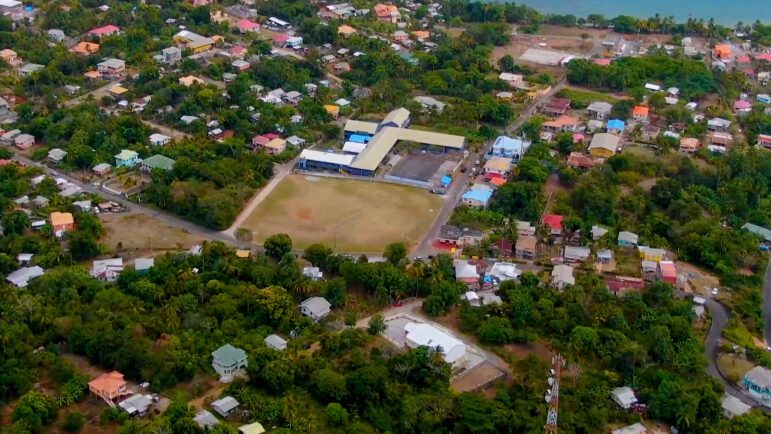
Life in Telescope
Telescope is the largest community in the big parish St Andrew, and like many other communities throughout the island, is plagued by poverty.
Mike “Captain” Noel referred to the village as a once-neglected community that has recently seen a lot of development taking place over the last few years, however, he pointed to the lingering remnants of decay of the long-neglected community like unsightly dilapidated and abandoned buildings which are still much visible.
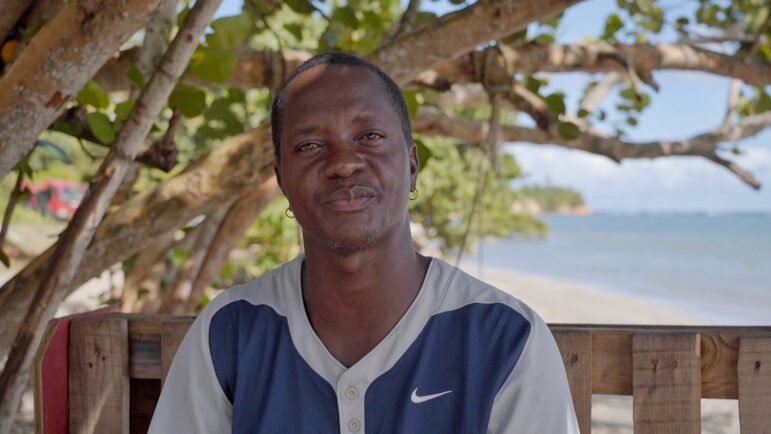
Noel is a resident of Telescope. He knows all too well about the everyday struggle of young people in that community. Noel suggests that the options are limited for young men, as there is no alternative means of earning a livelihood and many resort to selling drugs and getting involved in criminal activities.
Noel, a self-taught mechanic and entrepreneur who also sees himself as a community organizer, has embarked on several projects to beautify and uplift his surroundings. He also shares a passion for mentorship, as he too understands the need for the older male generation to actively play a role in their community to help curb juvenile crime.
Noel said he understands the important role that education plays in the life of children and credited his stepfather for teaching him how to read and write at a young age.
“I remember growing up at 9 years old and I couldn’t read and write, but my stepfather home-schooled me. One time there was a floating library called the [MV Logos Hope], a big boat. I used to go down in the morning and come out in the evening, so half of the things I have are because I have been reading. I learned mechanics, and I never went to any institution to learn mechanics. I read books and then after I manifest what I learnt and then I get to experience and I was able to teach a lot of people.”
In addition to the high level of poverty and unemployment, many within his community have grown to normalize their experience but with a community like Telescope where there was no functioning community centre until recently, many young people had no other choice but to subject themselves to the underworld.
“When you take a youth and grow him up in an environment where all he sees is negativity, from very small, that becomes programming. They [Children] are allowed to be on the streets and curse obscenities… But if you take those kids and bring them back to the values that we once had… give them [positive] things to do but in Telescope, over the last few years we have seen this [lost].”
Male Underachievement
Each year, many institutions focus on academic excellence, while inadvertently ignoring the glaring signs of the worsening reality of academic underachievement, especially among males. The extent of the gender disparity concerning academic underachievement is quite evident within primary schools when looking at the Caribbean Primary Exit Assessment (CPEA) summary report.
In 2022, 149 students were unable to meet the requirement to be advanced to a secondary school.
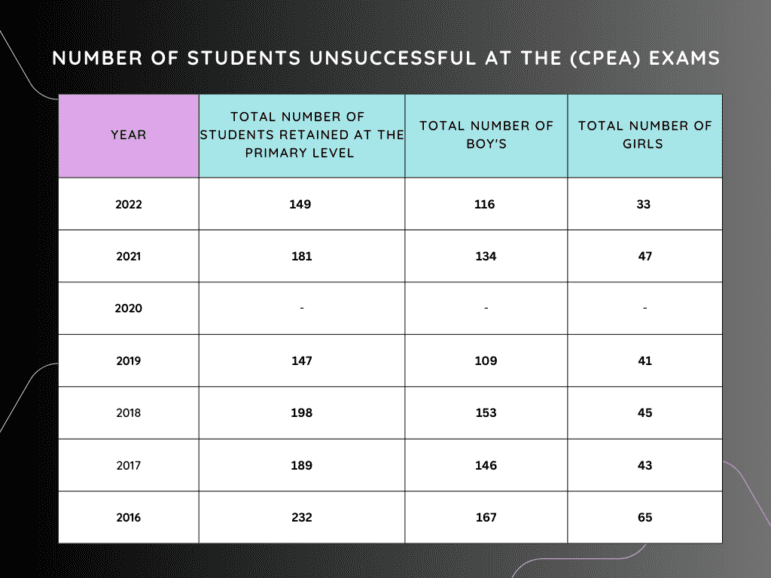
The 2017 edition of the Statistical Digest, which contains data as far back as 2006, also paints a similar picture of the true extent of male underachievement. According to that document obtained from the Ministry of Education, the highest percentage of male repeaters in primary school was recorded between 2011 and 2012, where 78.8% of the students kept back were males. In 2011 and 2012, male secondary school repeaters stood at 68.9%. Males.
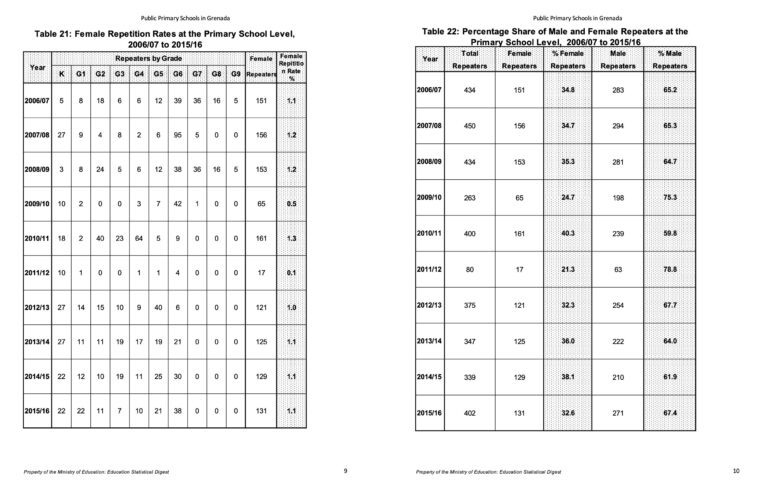
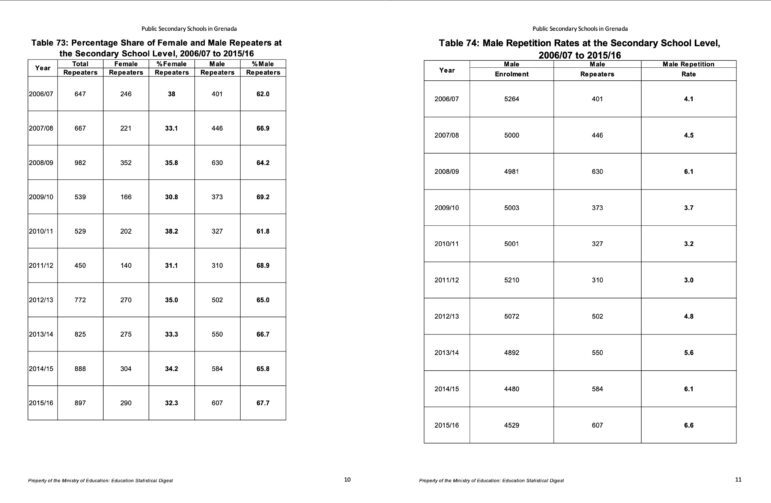
The dropout rates serve as a reminder male students are struggling. So what are the factors contributing to male academic underachievement and is there a correlation between boys’ underperformance and the high male prison population?
In March 2023 there were 15 young people between the ages of 14 and 17 at the Grand Bacolet Juvenile Rehabilitation and Treatment Centre. These are 11 boys and just 4 girls.
These young people were referred to the centre on the order of a juvenile court after being convicted of various offences. These offences range from theft, drugs, violent harm offences and deviant behaviours. The total population at the Juvenile Rehabilitation and Treatment Centre is said to be the lowest on record compared to just a few years ago when the centre housed more than 40 residents, including 33 boys and only 8 girls. Many of these were high school dropouts.
From just a cursory glance at the numbers, a gender gap can be observed where boys caught up in the juvenile justice system outnumber that of girls, a worrying trend that can also be seen at the nation’s lone adult prison facility where the incarceration of men is significantly higher than that of women.
According to statistics provided by the island’s lone adult prison, Richmond Hill Prison, out of a total prison population of 384, only 3 are females. Many of the men institutionalised at the prison either did not attain a secondary education or did not complete their primary or secondary education.
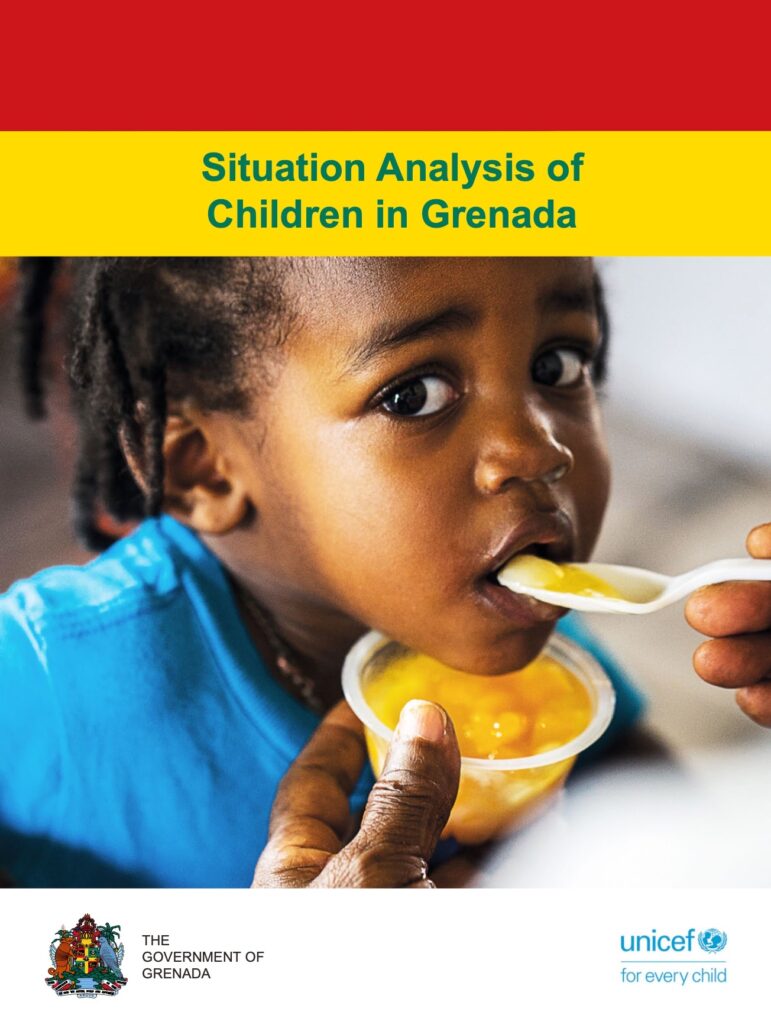
Now to answer the question previously asked, let’s travel to the rural parish of St Andrew listed by a 2017 UNICEF report titled “Situation Analysis of Children in Grenada”, as one of two parishes considered to have some of the most impoverished villages. In that report, The parish of St Andrew was said to have 44% of its people living below the poverty line. But while visible evidence of poverty and inequality in wealth distribution can clearly be seen, there exists a more covert societal dilemma of epic proportions, which is the worsening state of mental poverty facing its youthful population, especially among young men.
There is a correlation between boys’ underachievement and the high male prison population in Grenada says Dr Damian Greaves is a Sociology Professor in the Department of Humanities and Social Sciences at St. George’s University. Dr Greaves feels that while society abhors failure, “it really perpetuates failure, and it perpetuates failure through the education system,” Dr Greaves pointed out, “and generally through the socialization process of our males.” He adds.
Dr Greaves was quick to point out that there is also “marriage between male underachievement and criminality,” “I know that our society has failed males,” he said, “Our males are involved in gun crimes and violent situations, it is becoming a major source of concern and whereas we are talking about the economies of countries and we are not dealing with crime,” Dr Greaves said.
He described the crime as being a major setback to development projects and “pursuits of our small island developing states across the region and beyond.”
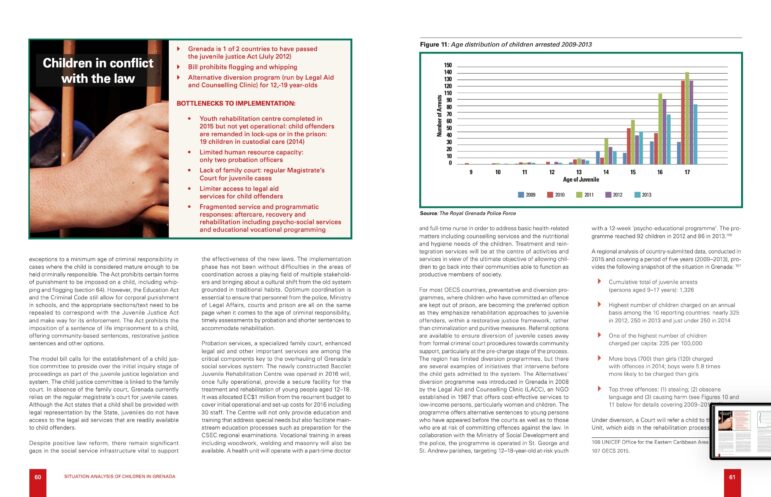
A snapshot of the situation in Grenada regarding the juvenile crime was also highlighted in a UNICEF report’s regional analysis of country-submitted data, conducted in 2015, covering five years (2009–2013). According to the data, the cumulative total of juvenile arrests between the ages of 9–17 was 1,326, which at the time was the highest number of children charged annually among the 10 reporting countries. The report shows that more boys (700) than girls (120) were charged with offences in 2014 and boys were 5.8 times more likely to be charged than girls.
Life Behind Bars
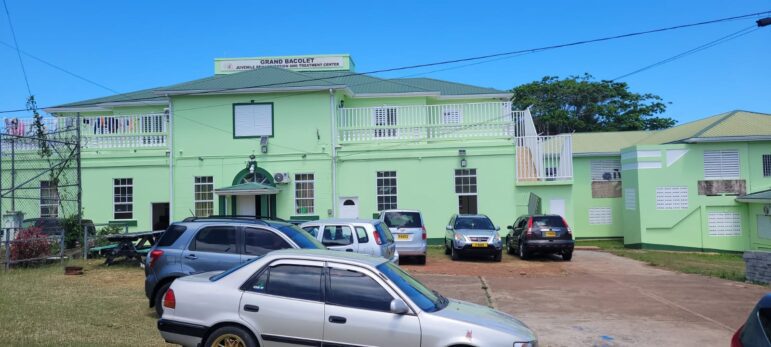
At the Grand Bacolet Juvenile Rehabilitation and Treatment Centre, juveniles sentenced by the court are referred to as residents, not inmates. The aim is to focus on removing the stigma of being incarcerated for criminal offences. Prior to the establishment of the facility in 2015, juveniles were sentenced to adult prison.
Life for the children at the facility is made as comfortable as possible since many of these young people, before entering, experience high levels of abuse. During their detention, residents are required to participate in many of the rehabilitation programmes that seek to provide some structure to their lives. This includes returning to school and preparing to sit their CSEC examinations since the literacy and numeracy skills of many of these young boys are below the required level.
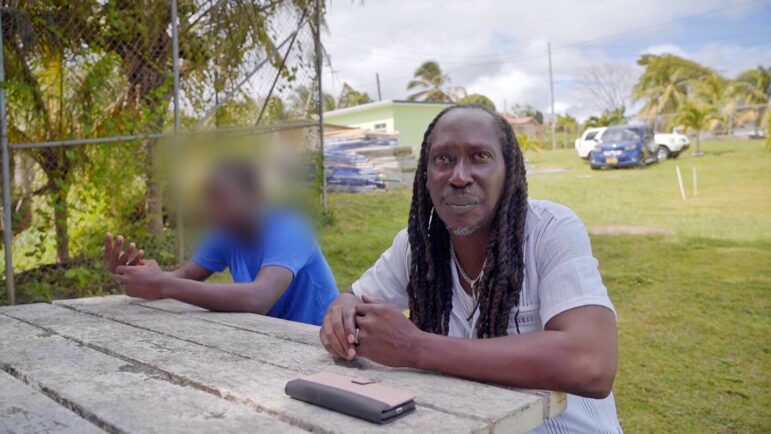
Andy Matthew is a Social Worker and youth advocate at the Grand Bacolet Juvenile Rehabilitation and Treatment Centre. He says he is saddened by the harsh reality that faces some of the young residents. He pointed out that despite the facility’s best efforts at rehabilitation, many of the residents would probably return to life as it was.
Many of the residents come from homes where male role models are absent. They also come from poor households, many with single mothers.
Matthew feels that the role that poverty plays in perpetuating crime can not be ignored, since many of the young people would not be in the facility if the very basics of their needs were being met at home.
“A lot of the time, the stealing is for food,” the Social Worker said, “the basic needs which show that their needs are not being met so yes, we might blame this child for doing that, but if their needs were being met, would they be in that position? So there I look at cause and effect,” He added.
Matthew said the main focus at the facility is to instill discipline and structure and to lift the self-esteem of these young men and women with the hope that they will have the strength to continue once they return to their normal lives.
“All the boys who are here, their issue is low self-esteem, no support, no structure,” Matthew said, “and it’s funny because when they come here and you put those structures in place like waking up early in the morning, tidying their room, coming out for exercise having time to shower and go to their classes, them knowing that then they actually take pride in it,” the Social Worker added.
Matthew also pointed out that there is evidence of a willingness to accept positive changes, “they are willing to make the changes but it is sustaining it after here, which is the problem,” He pointed out.
Mentoring
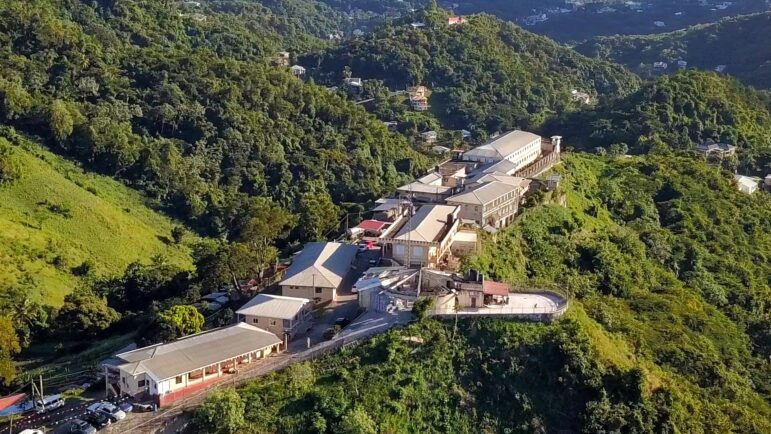
At the island’s lone adult prison where 60 -70% of male prisoners are between the ages 19-35, inmates are encouraged to change their lives around by getting involved in some of the mentorship and training programmes. These include basic literacy, anger management and counselling. Inmates also learn skills in areas such as electrical installation, General Agriculture and Refrigeration and Air Conditioning but despite having access to these opportunities, only 20% of the inmates take part. This low percentage of inmates opting to take part in training programmes continues to fuel the recidivism rate of repeat offenders, which is as high as 75% while only the recidivism rate for inmates involved in rehab is just 15%. This reality is quite troubling for Christopher Stroude, a Social Worker at the Richmond Hill Prison.
“When you look at the female population, we do not have a problem in terms of literacy but in relation to the male inmates, you would find almost 60-70% of them are functionally literate, meaning they just could get by. You would also find a situation where most of the guys are not skilled, so you will find about 10-15% of them with some form of skill. Now, if the only skill you have is the one that brought you to prison, then you will keep returning.”
In an overcrowded and understaffed prison facility, inmates are also not mandated to take part in any of the programmes offered at the prison, therefore it is solely left up to the individual to take advantage of the opportunity. Stroude said the mandate to make these programmes compulsory for inmates lies with the court system.
“We cannot force them to get involved in those programmes unless they volunteer for the programme or the court must mandate that they get involved, so unless this is done, it prevents us being able to do as much as we would want to. There is another issue… we do not have enough staff to be able to carry out all that is needed.”
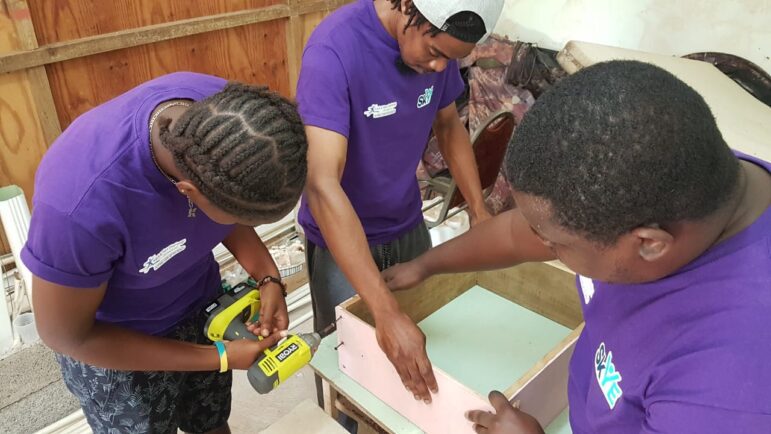
One organization is attempting to change the tide regarding male underachievement and incarceration. Adult and Teen Challenge Initiative has been in existence since 2019 and has so far instituted early intervention, Drug Prevention and drug rehabilitation programmes that are geared towards preventing these troubled youth from entering the prison system. Currently, the organization is working with 52 at-risk youth who are all high school dropouts, in getting them certified in 3 CVQ areas which include rabbit rearing, crop production and beekeeping. Executive Director Jude Hector, is pleased to report that 44 out of 52 males enrolled in the programme have already found jobs with 6 having started their businesses. However, he said in order to make a serious dent in the recidivism rate at the prison, there must be an even earlier intervention in the homes of these troubled youths.
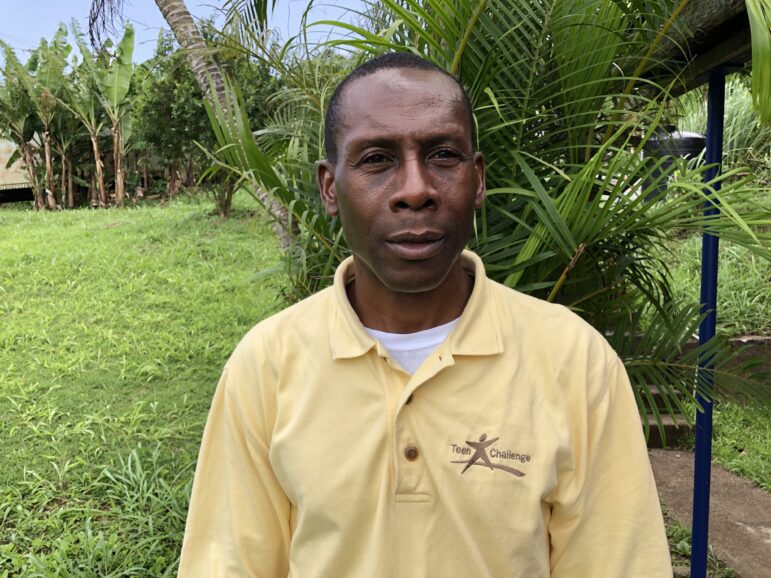
“A lot of the men we work with have little or no substantive relationship with their fathers so what tends to happen is that the influences on their lives are coming from the music or the blocks and other areas where they are being pulled in a negative direction. So to really prevent that problem, we need to look at what is happening at the home. Let’s begin to look at our parenting style and let’s begin to look at the quality times we spend with our sons.”
The findings in this report clearly show that there is a correlation between boys’ underperformance and the high male prison population. Recently, as part of its Caribbean Basin Security Initiative (CBSI), the US Government launched 3 new programmes in Grenada, geared towards supporting youth development.
According to the USAID Eastern and Southern Caribbean, the programmes — Youth Resilience, Inclusion, and Empowerment (Y-RIE); Strengthening Evidence-Based Decision Making for Citizen Security 2.0 (CariSECURE 2.0); and Opportunities to Advance and Support Youth for Success (OASYS) are “expected to support national programmes to create a safer, more prosperous, and resilient Caribbean region.”
Under the CariSECURE 2.0 Project, the United Nations Development Programme (UNDP) will partner with the Ministry of Social and Community Development to strengthen Grenada’s criminal justice system to be able to collect and analyse data in order to support evidence-based decision-making to directly respond to the root causes of crime.
Meanwhile, for the male residents at the Grand Bacolet Juvenile Rehabilitation and Treatment Centre, the environment that led them to commit crime still exists once they leave the safety of the institution and it therefore will require an all societal approach to ensure they are protected and cared for because unless this is done then the spiraling acts of juvenile crimes will continue.
17-year-old, John, is scheduled to be released back into society in May 2023, and Social Worker at the facility Andy Matthew is confident that based on the young man’s progression, he will be in a better position to navigate away from a life of crime.
This is an investigation completed by Curlan Campbell for Caribbean Investigative Journalism Network with the support of the International Center for Journalists (ICFJ) as part of the Investigative Journalism Initiative in the Americas.
